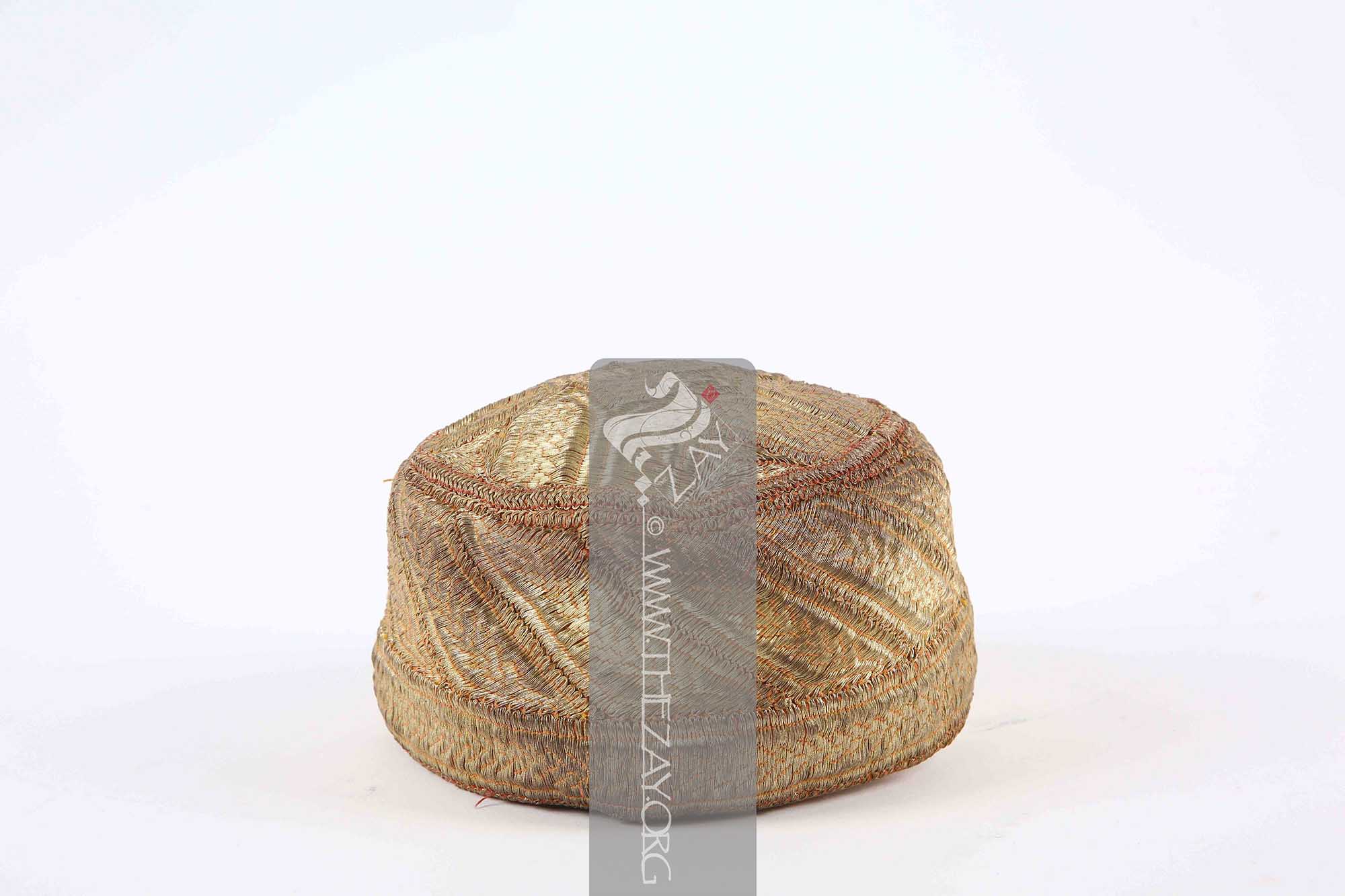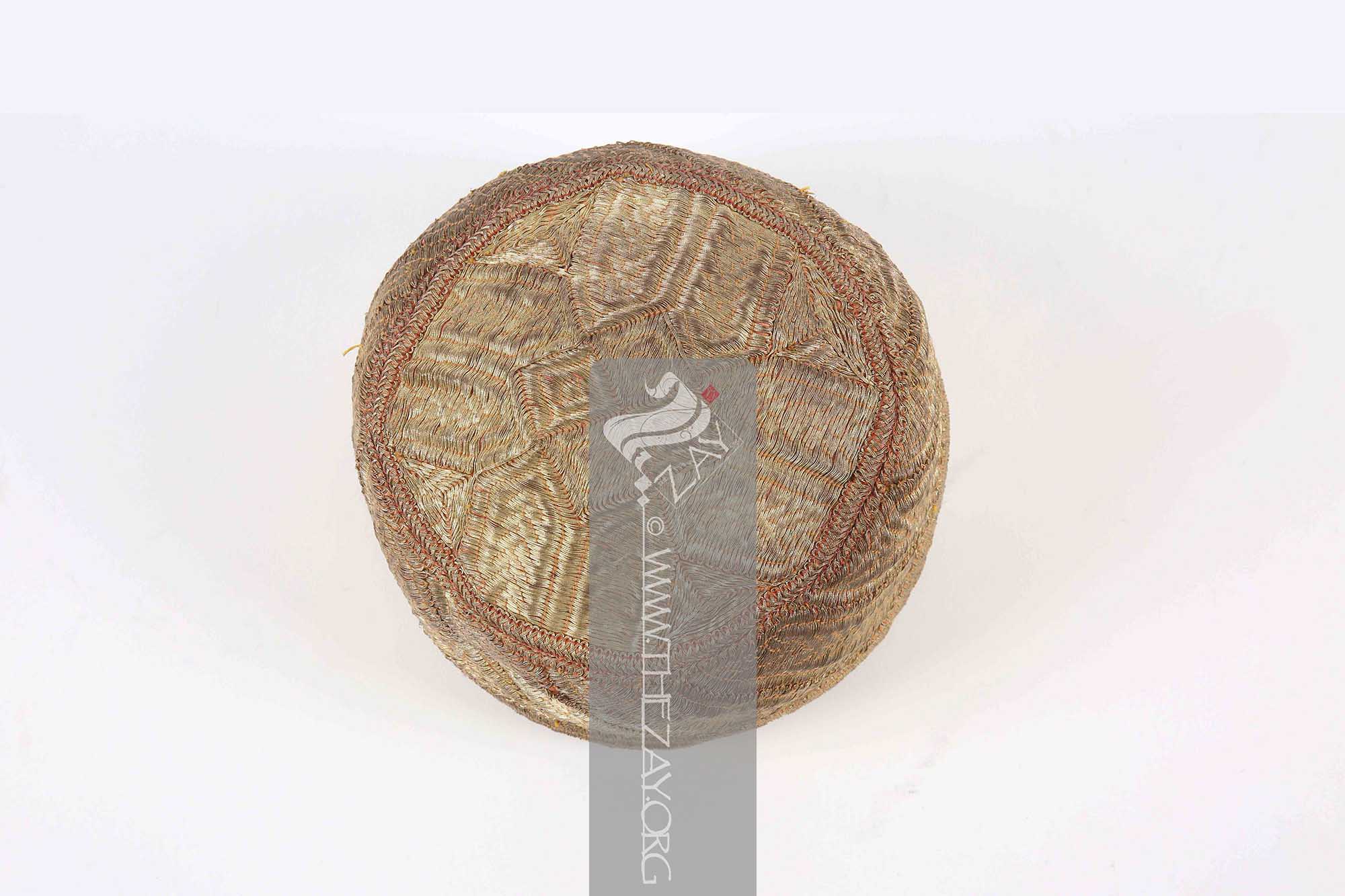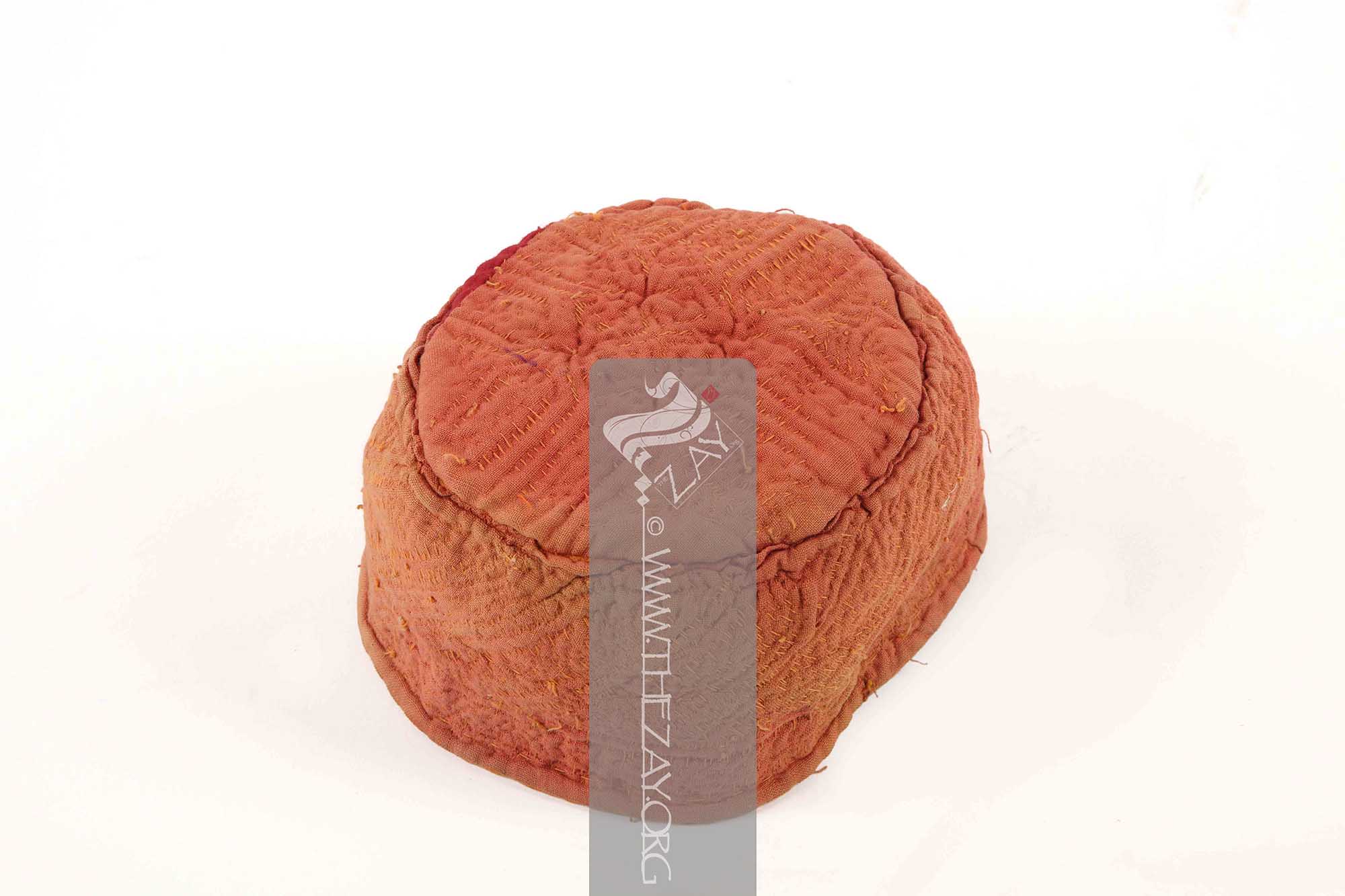






| Local Name | Topi |
| Object Category | Headwear |
| Gender | Male |
| Place Of orgin | Asia |
| Region | Gujarat |
| Object Range | India, Pakistan, Bangladesh, Afghanistan, Uzbekistan, Kyrgyzstan, Kazakhstan, Turkmenistan, Tajikistan, Iran |
| Dimensions | Length: 8 cm Width: 21cm |
| Materials | Cotton Metal |
| Technique | Hand Stitched Hand Embroidered |
| Motif | Geometric |
| Provenance | Purchased, Kerry Taylor Auction, London 2020 |
| Location | The Zay Zay: (Arabic: costume, Pl. azyaā’), a set of clothes in a style typical of a particular country or historical period. Initiative |
| Status | In Storage |
| ZI number | ZI2020.500741g ASIA |
Ṭariq: (Arabic; Synonym: tulle_bi_talli
Tūlle_bi_tallī: (French: Tulle – a city in France where fine material for veil was first made; Turkish: tel – wire; Synonym: tariq; talli; badla; khus_dozi ), series of small metal knots made on a woven net ground as embellishment. The term is commonly used in the North African Arab region specifically in Egypt.
Ṭariq: (Arabic; Synonym: tulle_bi_talli
Tūlle_bi_tallī: (French: Tulle – a city in France where fine material for veil was first made; Turkish: tel – wire; Synonym: tariq; talli; badla; khus_dozi ), series of small metal knots made on a woven net ground as embellishment. The term is commonly used in the North African Arab region specifically in Egypt.
Couching: (Latin: collocare – Place together), in needlework and embroidery couching is a technique in which yarn or other materials are laid across the surface of the ground fabric and fastened in place with small stitches of the same or a different yarn
) style with gold and silver metal threads featuring intricate geometric patterns (jaalJaal: (Sanskrit: jaal – A net, web, or a mesh), the decoration which fills the ground between the paisley Paisley: (Scottish Gaelic, Pàislig: a town in Scotland), often called buta, boteh, amli, or kalgi in the subcontinent and kazuwah in Arabic, is a Persian tear drop motif with a curved end specially in textiles. Its popularity and subsequent local production in 18th century at Paisley are responsible for its nomenclature. cones at the heads of a shawl Shawl: (Persian: shāl from Hindi: duśālā – Shoulder Mantle), a shawl is a South Asian version of a scarf worn or wrapped loosely over the shoulders and is usually made of wool. .
).